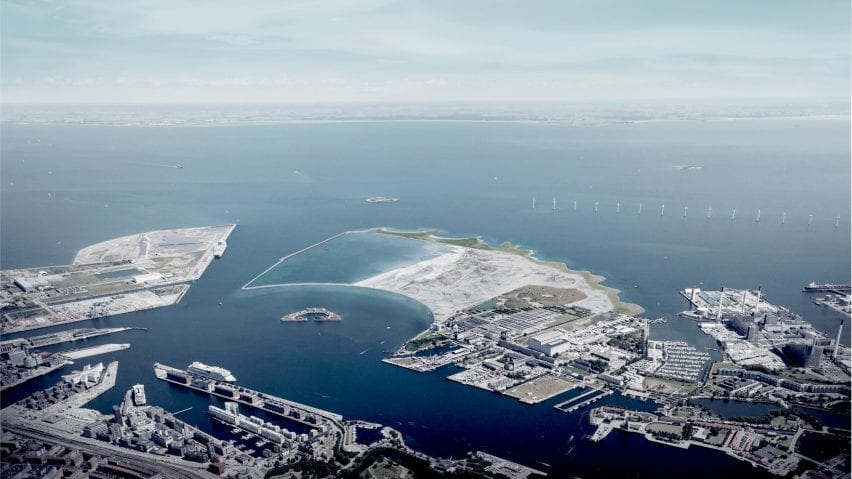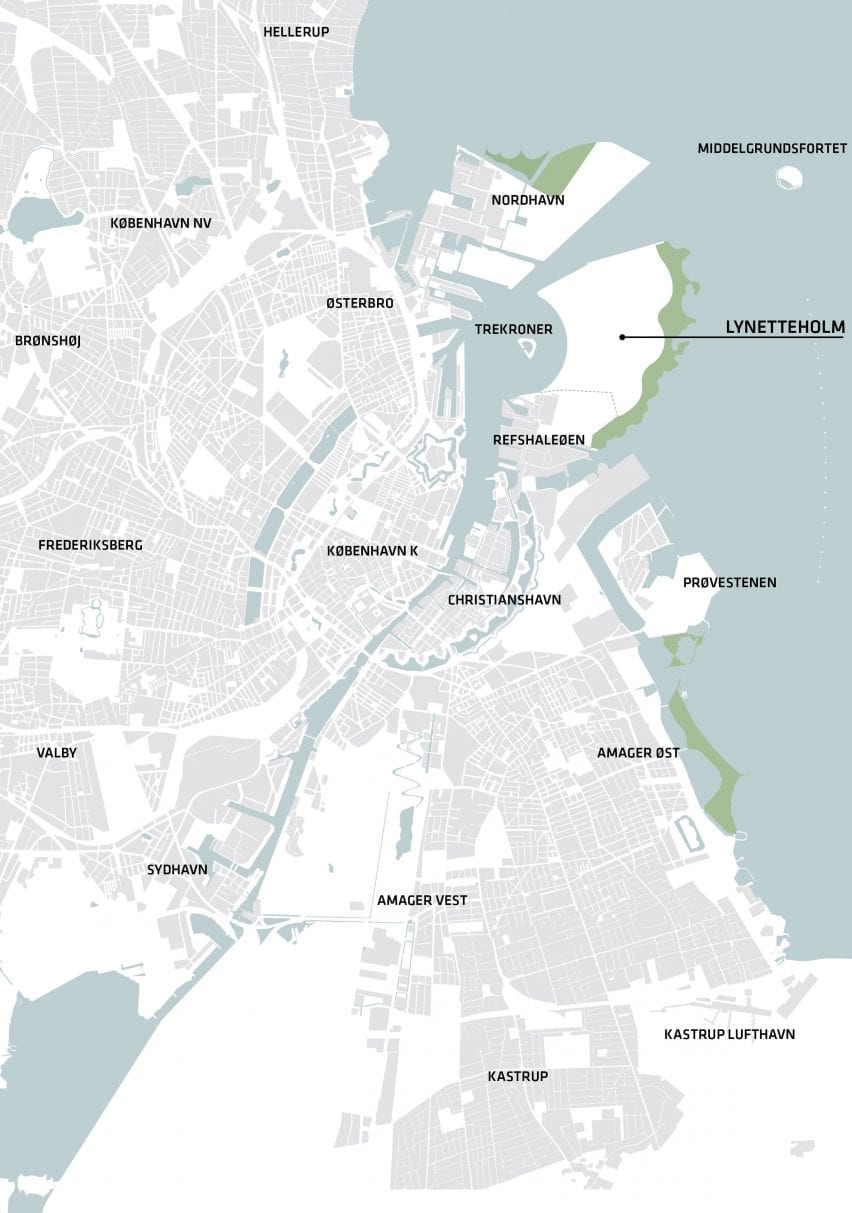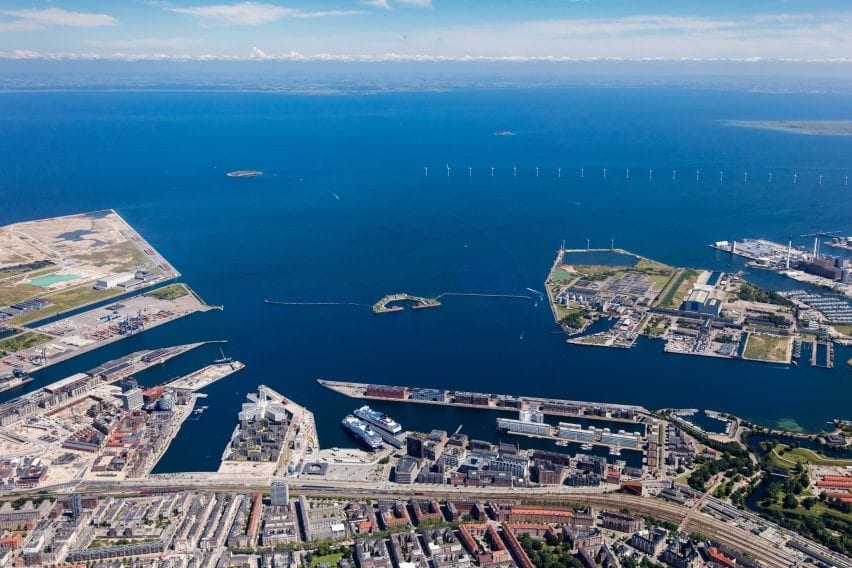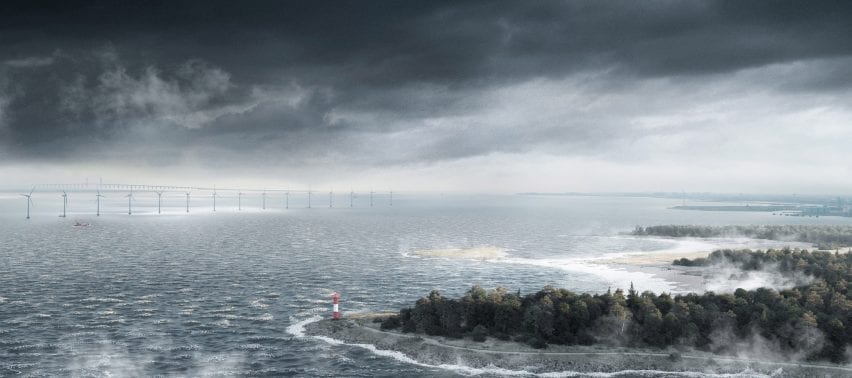
Artificial island Lynetteholm to be built in Copenhagen harbour
The Danish parliament has approved the building of Lynetteholm, an artificial island off the coast of Copenhagen that will house 35,000 people and protect the city's harbour from rising water.
The 275-hectare Lynetteholm project was designed by COWI, Arkitema and Tredje Natur as a housing and business district that will also become a bulwark against climate-change induced storms.
Lynetteholm will be built by development company By & Havn (City & Port) using soil from construction projects in Copenhagen and the surrounding area.

The artificial island will be located between Nordhavn and Refshaleøen and will protect the city from "more frequent storm surges and rising water masses," said Tredje Natur.
In total homes for 35,000 people will be built on the peninsular that will partially enclose the harbour to act as "climate and storm surge protection".

After winning approval in the Danish parliament, where it was voted in by 85 votes to 12, Lynetteholm is set to be built over the next 50 years. However, it has met resistance from environmental groups, according to the BBC.
This is partly because construction of the island requires transporting 80 million tonnes of soil through the city, which has been estimated to result in 350 lorry journeys per day through the Danish capital during the construction period.
It has also been criticised by the Coalition Clean Baltic, which has "grave concerns" about the project. It says Lynetteholm could have "disastrous consequences" for the Baltic Sea environment.
By & Havn has stated that it will monitor the project's environmental impact.
"The project has been environmentally assessed and qualified in consultation with the country's leading experts and in dialogue with Copenhageners, and therefore the Folketing [parliament] has today been able to adopt Lynetteholm on a well-documented and informed basis," said By & Havn CEO Anne Skovbro.

Marine feasibility studies, archaeological studies and tender for contracts is due to take place later this year and By & Havn expect Lynetteholm to be completed in approximately 30 years.
A number of recent projects have envisioned ways in which to make use of Copenhagen's many waterways.
Marshall Blecher and Studio Fokstrot will build a "parkipelago" of floating islands in the city, while Urban Power unveiled plans for nine artificial islands that would become a sustainable tech hub off the coast of Hvidovre, Copenhagen.
Images are courtesy of By & Havn, COWI, Arkitema and Tredje Natur.